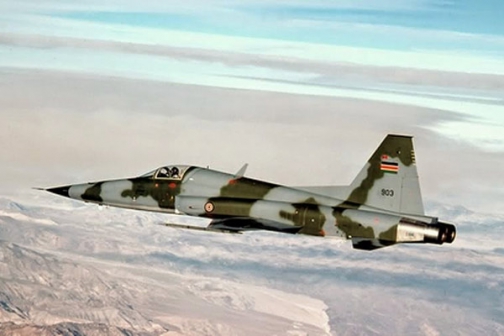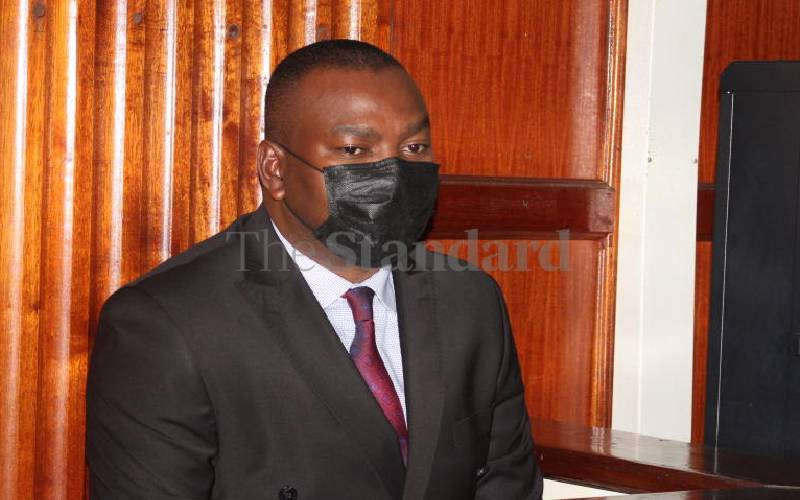
A Kenya Defence Forces airstrike on an Al Shabaab hideout killed Maalim Janow, the commander and mastermind of the deadly attack on the Amisom camp in El Adde, Somalia.
The Chief of Defence Forces, General Samsom Mwathethe, yesterday revealed that the planner of the brutal attacks was killed by airstrikes on Sunday following retaliatory attacks by KDF.
Janow was killed during combat by the troops who were pursuing the attackers who massacred dozens of soldiers before looting ammunition and razing the Kenyan camp.
"Janow belonged to the Abu Zubair battalion of the terror group and was the head of operations in Bay and Bakool in Gedo region where the attack occurred," said Gen Mwathethe.
He was assigned leadership roles for the terror outfit in July 2012 and designated the head of operations, plotting and executing the offensive acts of the Al Shabaab wing that is now reinforced by jihadist ISIS suicide bombers.
Mwathethe made the revelations yesterday as he gave an account of the courageous battle the Kenyan forces fought following the attack.
The military head also announced that a board of investigation had been dispatched to the ground to investigate the circumstances leading to the attack and why it was not foiled.
He however, could not reveal the number of casualties and unaccounted for soldiers.
According to Mwathethe, the first plane that was headed for Kismayu but diverted to El Adde encountered resistance from anti-aircraft guns. This slowed the forces initial response.
"The anti-aircraft guns were positioned at a school in El Adde and this posed danger to our response teams," he revealed. This meant that KDF could not fly over the area.
Kenyan soldiers were forced to change tack and opted to travel by road, a journey that took over ten hours to cover a distance of 75km from Damasa to El Adde.
"The first reinforcement that was sent to rescue the injured soldiers arrived at the camp on the fourth day after the incident," said Mwathethe.
In the course of the journey, they met a number of soldiers who were trekking towards the Kenya-Somalia border and rescued them.
"The ground troops arrived there and picked the fallen soldiers on the fourth day," he said.
Stay informed. Subscribe to our newsletter
On the first day, the terror group started to load the loot onto civilian cars, ten hours after the attack had happened, before the convoy left and split into two.
On Tuesday, the KDF troops that had arrived at the scene of the attack took control of the camp and were expected to finish the search and rescue mission yesterday, said Mwathethe.
Meanwhile, KDF has announced that it will conduct a solemn send-off of the fallen heroes away from the glare of the media. Meanwhile, it has arranged for DNA tests to ascertain the identity of bodies that were burned beyond recognition during the attack.
President Uhuru Kenyatta reiterated his support for the troops saying: "As we celebrate the lives of our fallen heroes, our military command has made it clear that ceremonies that allow criminals to celebrate their hideous acts add no value to KDF morale. We are in an active state of war. Our troops are engaged in combat."
"We congratulate them for the good work they continue to do. We immortalise those who fall in the service of our country and people. We thank their families for choosing to stand with and alongside these brave men and women," said the President who is the Commander in Chief of the Armed Forces.
Following the attack, military intelligence officers are piecing together a puzzle that joins the dotted line between the Al Shabaab wing and the jihadists who offer financial and technical support to the militia.
Al Shabaab has two major battalions - the Saleh Nabhan brigade and the Abu Zubair gang both named after Al Shabaab commanders who died in battle. Both brigades have launched attacks on Amisom bases in Leego, Janaale and now El-Adde.
In each of the attacks, the terror groups used huge vehicle-borne improvised explosive devices (VBIEDs) to breach the targets followed by tens of militants.
Mwathethe explained that the explosives used in the attack on the El Adde camp were three times those used in the US embassy attack in Nairobi in 1998 in which more than 200 people killed and that on Jazeera Hotel in Mogadishu.
The El Adde blast shock effect was felt 400m from the centre of the attack.
The attackers use of VBIEDs is an indication that they had planned the raid for a long time. They exploited a tactical weakness during rotation of forces to exact the most damage.
El-Adde was the third Amisom base that Al Shabaab has overrun in the last seven months. In June 2015, the militia attacked and plundered Amisom's base at Leego, killing more than 50 Burundian soldiers and stealing equipment, vehicles and arms. In September, the militants stormed Amisom's base at Janaale, killing 19 Ugandan soldiers and taking others hostage.
Al Shabaab is now split into two with one group supporting ISIS and the other one Al Qaeda. It is suspected that the one behind the El Adde attack belongs to ISIS.
 The Standard Group Plc is a
multi-media organization with investments in media platforms spanning newspaper
print operations, television, radio broadcasting, digital and online services. The
Standard Group is recognized as a leading multi-media house in Kenya with a key
influence in matters of national and international interest.
The Standard Group Plc is a
multi-media organization with investments in media platforms spanning newspaper
print operations, television, radio broadcasting, digital and online services. The
Standard Group is recognized as a leading multi-media house in Kenya with a key
influence in matters of national and international interest.
 The Standard Group Plc is a
multi-media organization with investments in media platforms spanning newspaper
print operations, television, radio broadcasting, digital and online services. The
Standard Group is recognized as a leading multi-media house in Kenya with a key
influence in matters of national and international interest.
The Standard Group Plc is a
multi-media organization with investments in media platforms spanning newspaper
print operations, television, radio broadcasting, digital and online services. The
Standard Group is recognized as a leading multi-media house in Kenya with a key
influence in matters of national and international interest.









